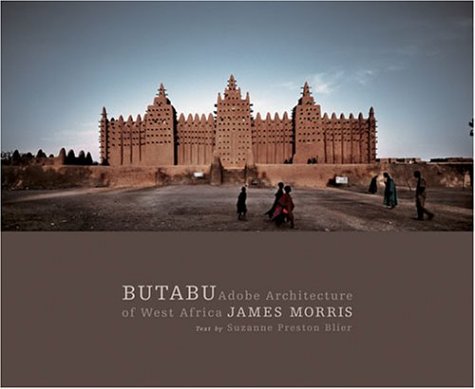Many think that sub-Saharan African architecture is little more than mud huts. Mud, yes--but certainly not huts. Instead, these adobe buildings, many of them enormous, show sublime sculptural beauty, variety, ingenuity, and originality. In the Sahal region of western Africa--Mali, Niger, Nigeria, Togo, Benin, Ghana, and Burkina Faso--people have been constructing earthen buildings for centuries. But they remain unknown to most of the Western world. Their plastic forms--from simple stairways, to ornamented domes, to complex arches--are highlighted by subtle painting and intricate grillwork.
James Morris spent four months photographing these hidden jewels, from the great mosque at Djenne--the largest mud building in the world--to small houses in remote animist communities. Butabu shows these works as both aesthetic treasures and as architecture with contemporary relevance. These are no museum pieces, but rather buildings that continue to be maintained and built, even as they are threatened by the uncertainties of weather and the encroachment of Western technology.
Text by Suzanne Preston Blier covers the history of earthen architecture, the technology that creates it, and the symbolism of its form.
- ISBN10 1568984138
- ISBN13 9781568984131
- Publish Date 1 September 2003
- Publish Status Out of Stock
- Out of Print 7 June 2011
- Publish Country US
- Imprint Princeton Architectural Press
- Edition 2003. Corr. 2nd Printing ed.
- Format Hardcover
- Pages 216
- Language English
